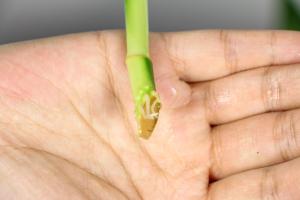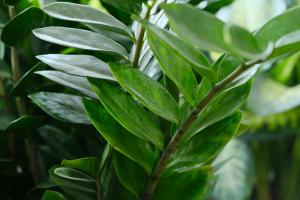Can Plants Live in Colored Water?
Plants require water to survive, as it is a crucial element in the process of photosynthesis. Water is essential in aiding the absorption of minerals from the soil, making it an essential component of plant growth. However, the question arises – can plants live in colored water? The answer is not straightforward and may depend on a variety of factors.
The Science Behind Plant Growth and Water
The process of photosynthesis involves the absorption of light energy by the plant's chlorophyll, which converts carbon dioxide into carbohydrates. This process occurs in the presence of water, known as the light reaction. Water is also crucial in transporting nutrients from the soil to the plant's leaves and other areas where it is required for growth. In essence, water is essential for plant growth and survival.
The Effects of Colored Water on Plants
Colored water has been observed to have both positive and negative effects on plant survival. In some cases, the addition of dyes to water used to irrigate plants has been shown to enhance plant growth. However, this is only observed when the dye does not impede the absorption of sunlight and nutrients by the plant. In contrast, some dyes have been shown to affect the plant's growth negatively, resulting in stunted growth or even death.
Dyes and Their Effect on Plant Growth
Different types of dyes can have varied effects on plant growth. For example, some food coloring dyes, such as FD&C blue, have been observed to promote plant growth when diluted in water. However, other dyes like Acid Green 25 and Acid Red 52 have been found to impede the plant's growth. It is important to note that the impact of different dyes on plant growth is not limited to the amount used but also the type of plant being cultivated.
Factors Affecting Plant Growth in Colored Water
The potential impact of colored water on plant growth may depend on various factors such as dye concentration, plant type, and environmental conditions. The amount of dye used directly affects the plant's growth, with higher concentrations resulting in more adverse effects. Also, different plant species respond differently to different dyes. Some plants may be more susceptible to dye toxicity than others. Similarly, environmental conditions such as light, temperature, and humidity may also affect the plant's growth rate in colored water.
Conclusion
In conclusion, plants require water to survive and grow. Colored water may have both positive and negative effects on plant growth, depending on various factors such as dye concentration, plant type, and environmental conditions. While some dyes can enhance plant growth when diluted in water, it is essential to consider the potential adverse effects of certain dyes on plant health. In summary, colored water may be used to enhance plant growth only when the potential positive effects outweigh the negative impact.

 how many times do yo...
how many times do yo... how many planted tre...
how many planted tre... how many pine trees ...
how many pine trees ... how many pecan trees...
how many pecan trees... how many plants comp...
how many plants comp... how many plants can ...
how many plants can ... how many plants and ...
how many plants and ... how many pepper plan...
how many pepper plan...































